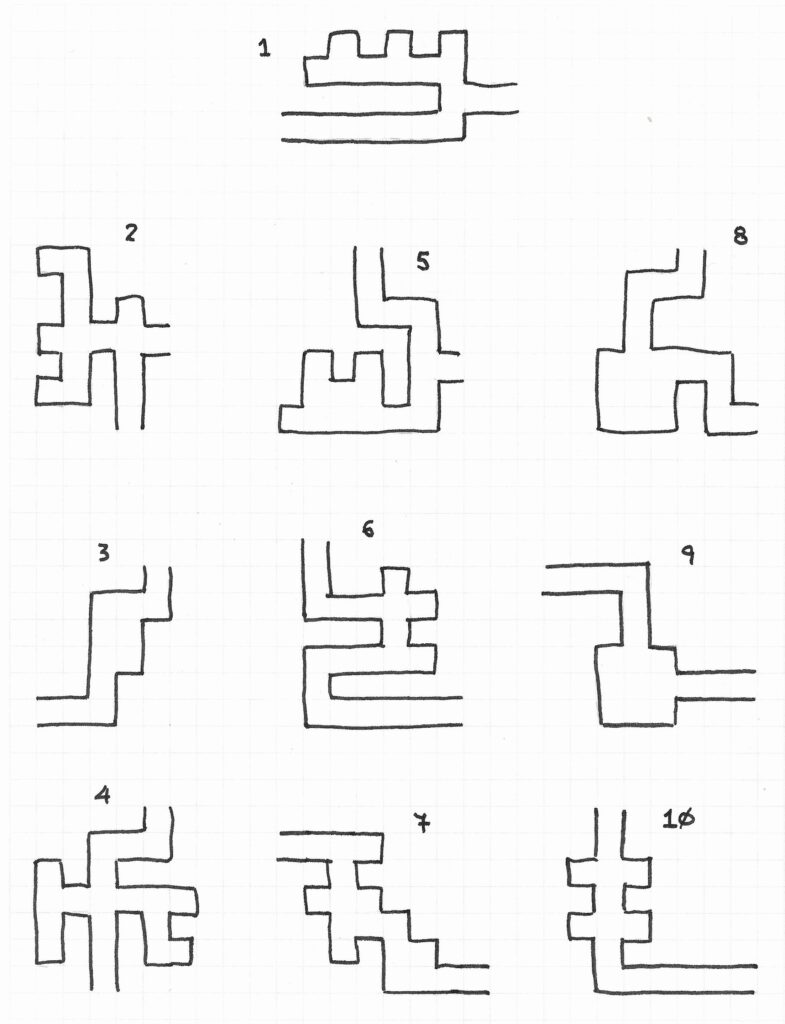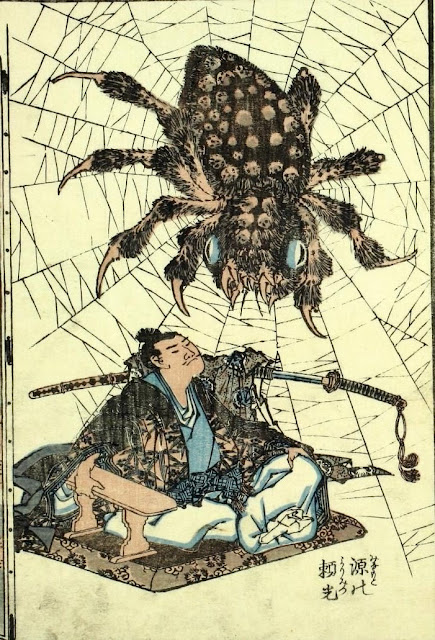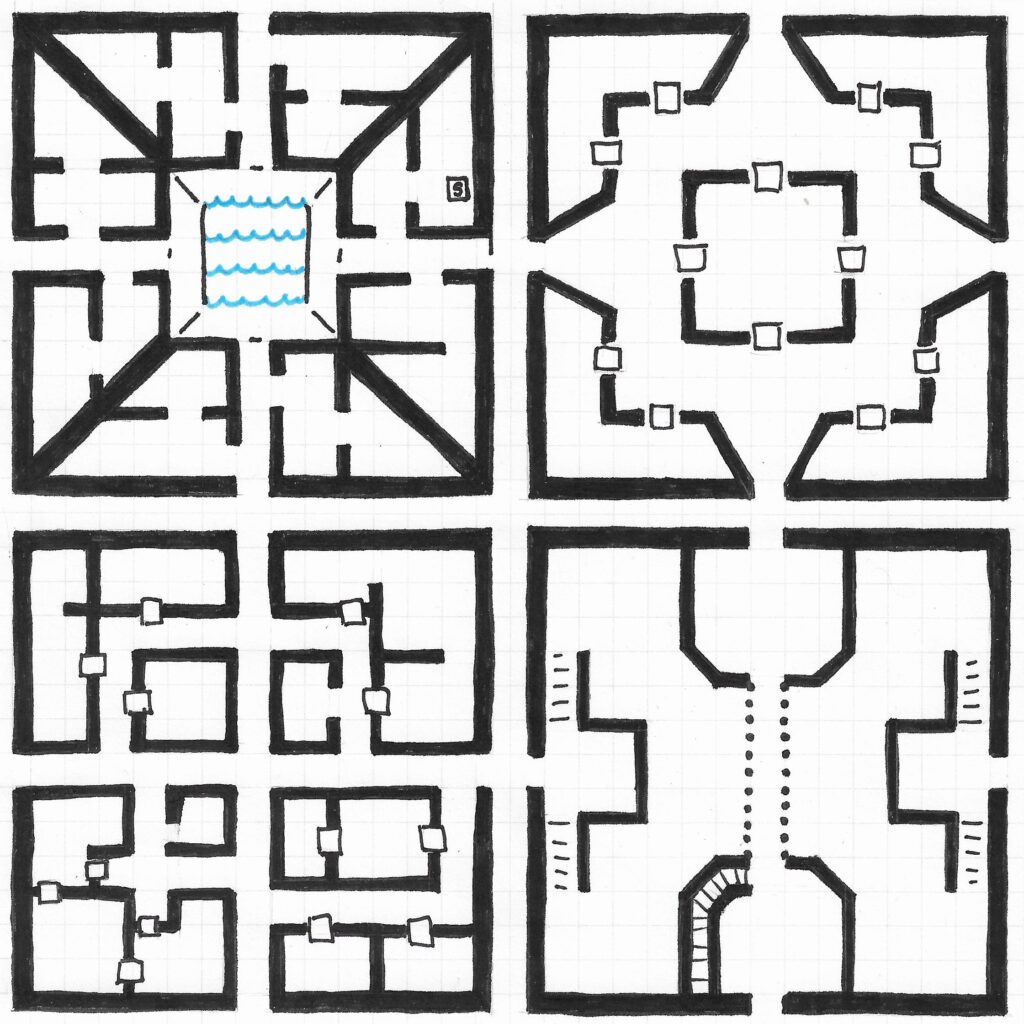Plans? What Plans?
Well, so much for my plan to post every Monday, Wednesday, and Friday. The middle of the week arrived, and I got some stuff done, but obviously none of that was typing up and posting more Wednesday Lore about the goblin-spider’s lair. So, how about this:
I’ve been running Castles & Crusades for a while now. I have a weekend C&C game, and I have three groups of students in grades 5 through 7 for whom I run C&C, each group getting lunch/recess time on Tuesdays, Wednesdays, and Thursdays to assemble in my classroom for heroic fantasy adventures. This summer, I’ll be running two one-week long C&C game camps as well.
The more I play C&C, the more I like it. I’ve pulled several of my AD&D books from the shelves to use with C&C. With my students, I’m running a series of old Dungeon adventures. One of my students groups segued from a Dungeon adventure into Day of Al’Akbar. This week, the PCs in that group navigated the checkerboard riddle room, albeit not without suffering some damage from electricity arcs.
In my weekend game, we’ve acquired two new players, the middle-school-age nephews of one of my regulars. With the addition of two new players, we firmly established a second group of six PCs operating out Elmelynn, a small town about a week north-by-northwest of the campaign’s original group of four PCs who operate out Sisak, a frontier farming village. The new group has helped a lost modron escape to a friendlier reality. In the process, the new group learned that a modron army has invaded their campaign world in order to “restore the balance” (as the modron explained). The group’s rogue also learned that their town’s criminal kingpin has demon or devil blood flowing in his veins. (Aside: I really wish C&C called rogues thieves and wizards magic-users.)
Shortly after the modron adventure, the PCs signed on to escort of new tax assessor to Sisak. (Nota Bene: This tax assessor is the replacement of the assessor who was killed by monsters which were defeated by the Sisak group of PCs.) Group two also heard that a special shipment of dwarven ale had gone missing en route from Hol Lodur in the Shadowed Vale to Elmelynn. Since the tax assessor isn’t leaving for a few days, the players decided to track down the missing ale and collect the reward offered for its return.
Group two’s first day on the trail of the ale was eventful. Hol Lodur in the Shadowed Vale is not far from Elmelynn. The PCs tracked the missing shipment to where it had been stolen by a group of humanoids, whose trail led to an abandoned dwarven hold in the wooded highlands of the Vale. Cautious investigation learned that the ale was in the hold, and that there were bugbears and goblins there as well. The PCs withdrew to camp, sending back one of the dwarf NPCs recruited from Hol Lodur, the ale’s point of origin.
Since I’d been using random encounters (something I tend to shy away from), I figured it was sensible to see if this dwarf NPC encountered anything on his way back to Hol Lodur. A few dice rolls later (using the random wilderness encounter tables in the AD&D Dungeon Masters Guide) revealed that the paths of the dwarf and a hill giant intersected.
Many hours passed, and the NPC dwarf had not returned. The PCs followed the NPC dwarf’s tracks to where the hill giant attacked and captured the dwarf. The PCs then tracked the hill giant back to its lair. One PC, the fastest on horseback, raced back to Hol Lodur to get reinforcements. The rest of the party faced the hill giant. After a fierce battle in which the PC dwarf’s giant-fighting AC bonus did some heavy lifting, the PCs defeated the hill giant and its mate, rescued the dwarf from being roasted on a spit, and discovered a hoard of treasure. Also, three adolescent hill giants escaped by fleeing into tunnels leading deeper underground from the giants’ cave lair.
By the end of the session, the PCs were trying to figure out what to do with a bit more than a half-ton of coins and other treasure, gradually realizing that a simple find-and-retrieve mission has become quite complicated indeed.





